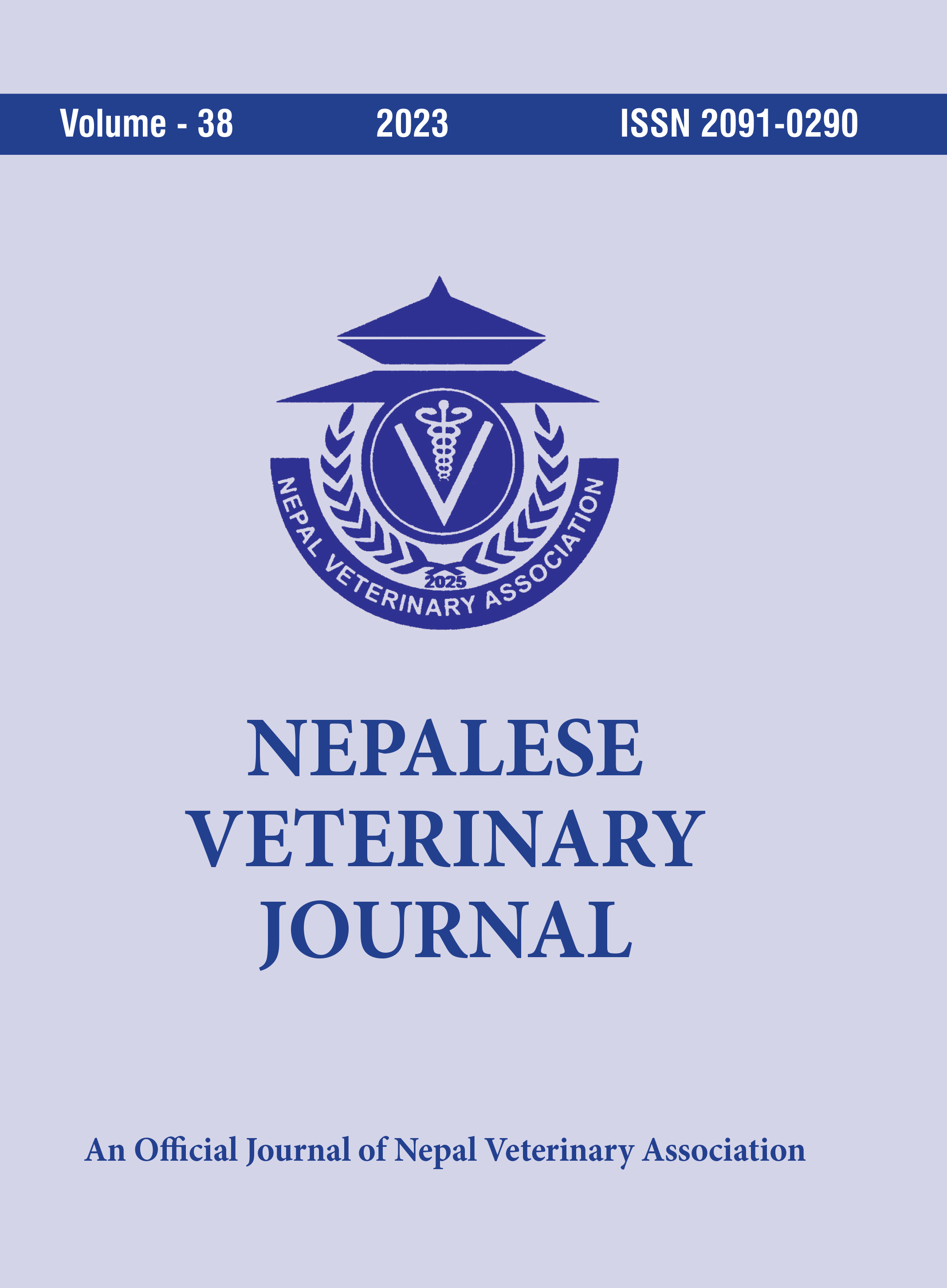Diagnosis and Management of Constipation and Obstipation in Canine: From Current Practices to Future
DOI:
https://doi.org/10.3126/nvj.v38i1.55867Keywords:
Constipation, Dog, Management, Novel drugsAbstract
This study was conducted to understand the present diagnosis and management patterns of constipation and obstipation in dog and accessing about its future holds. A total of 68 dogs both healthy (n=34) and constipated (n=34) brought to a private pet hospital in Kathmandu were included in the study for two-months during Feb-April, 2019 were recorded. The protocol comprised history taking (age, sex, breed and chief complains), physical and clinical examination, hematology/Biochemistry followed by radiography in some cases. Statistical analysis was conducted using MS-Excel 2016 and SPSS v25. We found that starting from the dietary management, rehydration and medical management using laxatives, enemas, antibiotics and supporting liver medications were being followed
to manage constipation and obstipation. Anorexia (82.4%) and dehydration were the most common clinical signs. Female dogs (52.9%) were found more affected than male dogs (47.1%). Large and small breed dogs (73.5%) were more prone to constipation than medium sized breeds (26.5%). Older Dogs (>60 months) (34%) were the most affected age groups. Haemato-biochemical blood findings showed significant increase in Total Leucocyte Count (Leukocytosis), Neutrophilia, ALP levels and Blood Urea Nitrogen (p ≤ 0.001) while there was also an increase in Serum bilirubin and Serum albumin levels (p ≤ 0.05) in constipated dog. This research showed increased risk of constipation in old and female dogs. Starting from high fiber diets, mild laxatives and enemas, the treatment can be proceeded to fluid therapy, antibiotic therapy and medications managing liver ailments after haemato-biochemical examination. Use of Novel prokinetic drugs practiced in humans like Cisapride and Pruracalopride, can be considered in veterinary practice. In situations of surgical management, most reliable would be the subtotal colectomy to manage idiopathic megacolon causing constipation and obstipation.
Downloads
Downloads
Published
How to Cite
Issue
Section
License
© Nepal Veterinary Association




